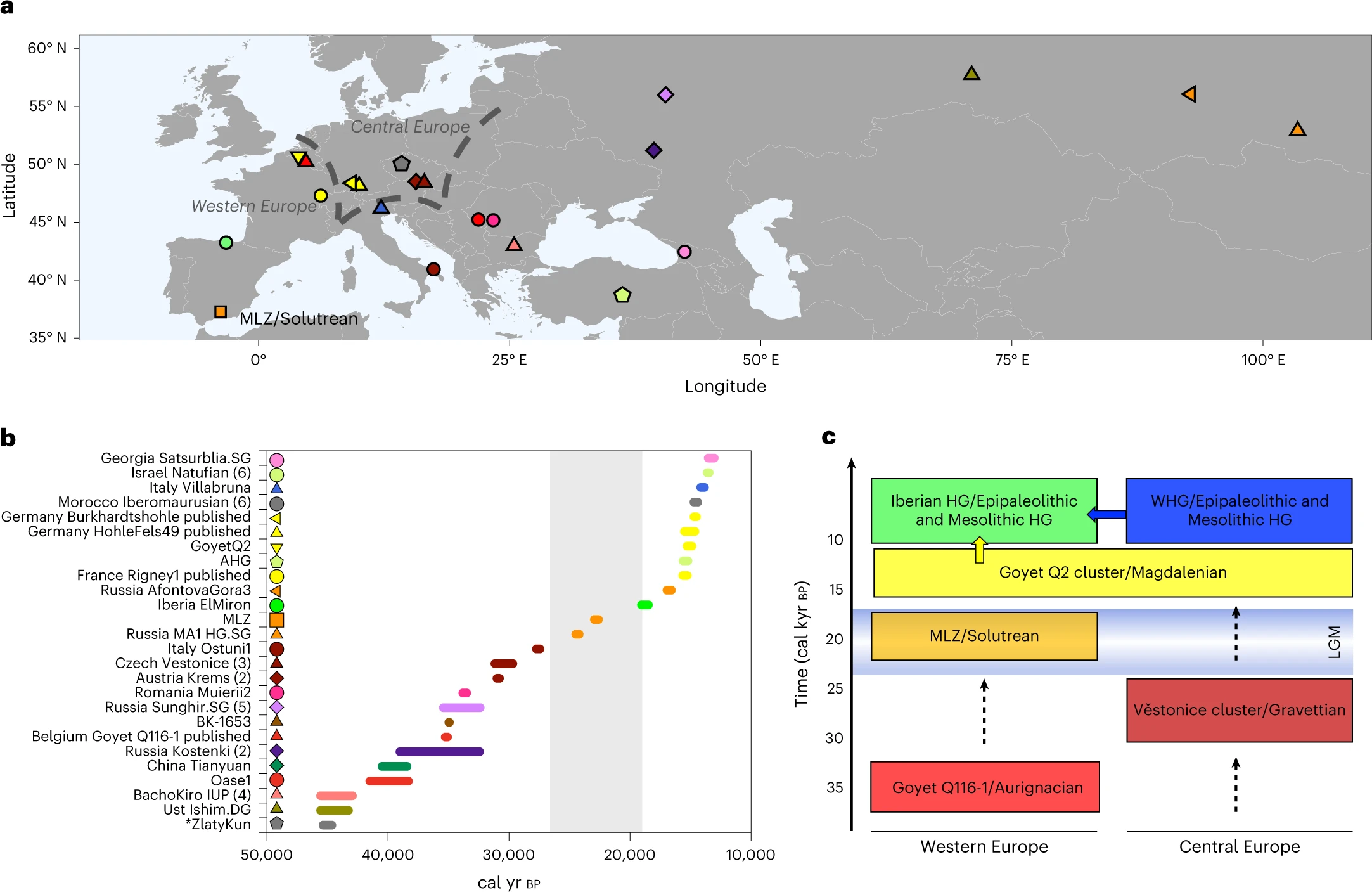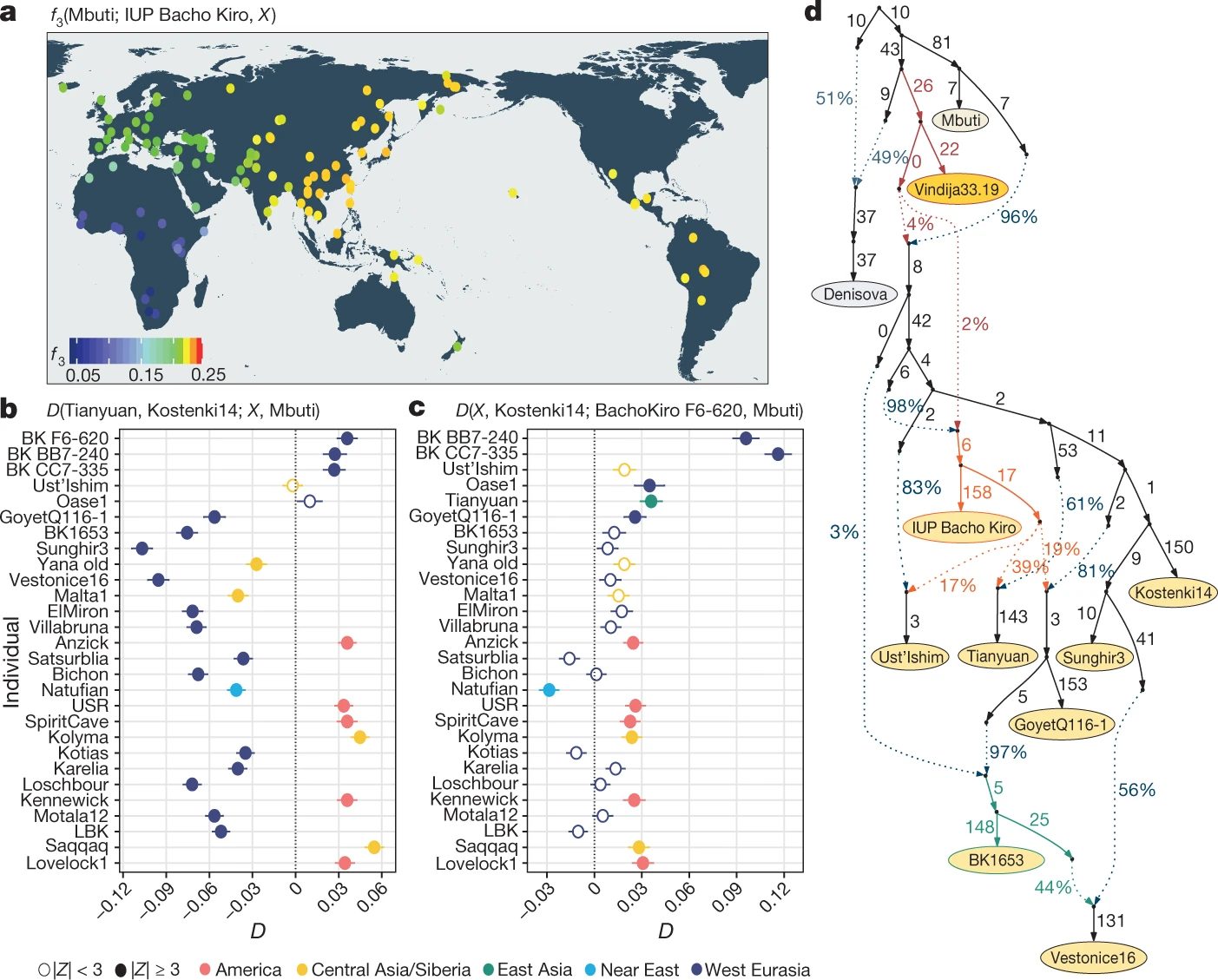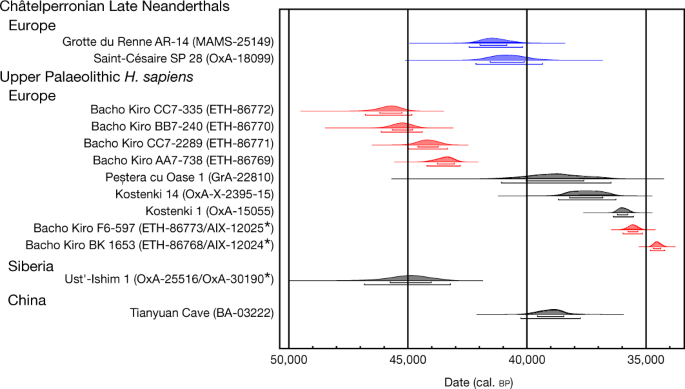Compared to South Asia and NE Asia, The peopling of Europe was more marked by human population expansions and contractions associated with major climatic events. Numerous studies indicate a dramatic population contraction in Palaeolithic Europe during the Last Glacial Maximum (LGM, ~26.6–19 cal kyr BP)
With the onset of the LGM, a population decline is observed in central Europe and human populations associated with the Gravettian technologies (33–25 cal kyr BP) retreated to southern latitudes, to regions in today’s Italy and central/southeastern Europe. Solutrean lithic tradition rooted in western European Late Gravettian technologies emerged during this period of intense cold called Heinrich 2 Event and following the LGM.
These earliest European population bottleneck from a Goyet like population during post LGM led to mtDNA H which is now the major mtDNA lineage in Europe.
The recent re-excavations at Bacho Kiro cave (Bulgaria) by archaeologists from Bulgaria and Germany discovered remains of Homo sapiens dated to ~ 45/ 43,000 calBP (Hublin 2020). Three individuals from the Initial Upper Paleolithic layer and another one (a lovely lady) dating to ~ 37,000 calBP (~ Aurignacian era in Europe) were sequenced (Hajdinjak 2021).
The Goyet IUP lineage came in as a part pre-Bacho Kiro lineage and another branching from a later lineage.
The paper by Hajdinjak et al found that IUP Bacho Kiro Cave individuals were related to populations that contributed ancestry to the Tianyuan individual in China as well as, to a lesser extent, to the GoyetQ116-1 and Ust’Ishim individuals (all |Z| < 3; Fig. 2d, Supplementary Information 6). This resolves the previously unclear relationship between the GoyetQ116-1 and Tianyuan individuals without the need for gene flow between these two geographically distant individuals. The cumulative evidence has also established that Upper Paleloithic populations in Europe and Siberia carried ‘East Asian’ lineages like Y-hg NO, C, F and mtDNA M, but these became increasingly attenuated by the Holocene.From Hajdinjak – populations related to the IUP Bacho Kiro Cave individuals disappeared in western Eurasia without leaving a detectable genetic contribution to later populations, as indicated by the fact that later individuals, including BK1653 at Bacho Kiro Cave, were closer to present-day European populations than to present-day Asian populations.
the Bacho Kiro Cave genomes show that several distinct
modern human populations existed during the early Upper Palaeolithic
in Eurasia. Some of these populations, represented by the Oase1 and
Ust’Ishim individuals, show no detectable affinities to later popula-
tions, whereas groups related to the IUP Bacho Kiro Cave individuals
contributed to later populations with Asian ancestry as well as some
western Eurasian humans such as the GoyetQ116-1 individual in Belgium.
This is consistent with the fact that IUP archaeological assemblages are
found from central and eastern Europe to present-day Mongolia
5,15,16
(Fig.1), and a putative IUP dispersal that reached from eastern Europe
to East Asia. Eventually populations related to the IUP Bacho Kiro Cave
individuals disappeared in western Eurasia without leaving a detectable
genetic contribution to later populations, as indicated by the fact that
later individuals, including BK1653 at Bacho Kiro Cave, were closer to
present-day Europeanpopulations than to present-day Asianpopula-
tions
29,30
. In Europe, the notion of successive population replacements is
also consistent with the archaeological record, where the IUP is clearly
intrusive against the Middle Palaeolithic background and where, apart
from the common focus on blades, there are no clear technological con-
d
Evidently, IUP diversity in Europe and western Siberia diminished and was supplanted by so-called West Eurasians (with some IUP-related ancestry preserved in the western Europe and Siberia in the East)

The earliest Bacho Kiro consists of Y-haplogroup C1, mtDNA-haplogroups U2 and U8c but the later ones are F* and F-M89. The C1 and F* are rare and found in few places in oceania nowadays. the F-M89 is found in South Asia widely and in small numbers world wide.


Vestonice: 84% Sunghir + 16% Villabruna
El Miron: 48% Villabruna + 56% Goyet
Loschbour: 91% Villabruna + 9% Goyet





